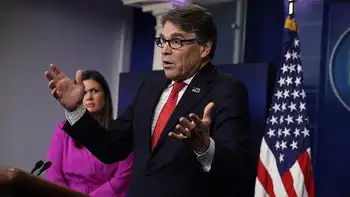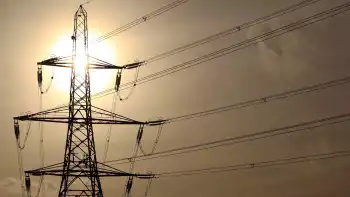Bill supporting residential turbines in NH passes
By Associated Press
Substation Relay Protection Training
Our customized live online or in‑person group training can be delivered to your staff at your location.

- Live Online
- 12 hours Instructor-led
- Group Training Available
"On a windy day it makes more power than we need and it turns our electric meter backward," said Meeh, 56, who earns credit with his power company for the excess energy generated by his 160-foot turbine, commonly called a windmill. "On days it's not windy, we use up our credit."
New Hampshire recently passed legislation to support residential turbines. The law sets a noise limit for the systems and prevents towns and municipalities from holding turbines to the same height standards as other buildings.
There are only about 14 residential turbines in the state, according to Tom Frantz, at the state Public Utilities Commission.
This is because turbines work best in windy locations, which not every potential customer has. Customers can also be deterred by the cost of the systems, ranging from $12,000 to more than $70,000.
However, demand for renewable energy systems, like wind turbines, is rising, said Mark Weissflog, president of kW Management, an energy services company in Nashua.
"Last year we were probably getting a call a week or every two weeks," said Weissflog of renewable energy systems. "Now we're getting one everyday."
Still, Weissflog's company only installs about four wind energy systems a year.
"When you're buying a renewable energy system you're hedging future cost increases," said "At the same time you're pre-buying renewable energy for 30-40 years."
Nationwide there are believed to be about 4,000 residential wind turbines, according Ron Stimmel, a small wind advocate with the American Wind Energy Association in Washington.
Wind energy only generates about 1 percent of the country's electricity, said Stimmel. And residential wind turbines account for 1 to 2 percent of that.
"It's like a drop of water in the ocean," said state Rep. William Chase, a Westmoreland Democrat. "But if we create the situation where individuals can do this and make it easier for them... then this will ultimately reduce our dependency on power produced by fossil fuel."
Chase sponsored the bill after receiving an e-mail from a student at the University of New Hampshire in 2006.
Laura Carpenter took on the issue as part of a group research project for a political science class. She was inspired by her family's struggle to erect a wind turbine on their Winthrop, Maine, property.
Carpenter said the local zoning board had little experience regulating the turbines, often held to the same height standards as buildings because of fire safety concerns that don't necessarily apply. The systems can be higher than the ladders of many small town fire departments, therefore violating existing safety codes designed for occupied buildings.
"I think there's still a lot of misconceptions around wind turbines and a fair amount of public resistance to them," Carpenter said. "A lot of people think of solar energy when they think of producing energy at home, but this is just another alternative."
Opposing the bill was The New Hampshire Municipal Association, which lobbies on behalf of state communities.
"We don't have anything against windmills certainly," said association government affairs attorney Cordell Johnston. "We had some concerns about it, because there's an effort by the state to limit towns' ability to exercise their zoning power."
Johnston said there also were aesthetic concerns and fears the bill would allow turbines to go up anywhere — including in historic districts.
Wind power is nothing new to New Hampshire.
One of the first commercial wind farms in the nation was built at Crotched Mountain, in southern New Hampshire, about 30 years ago, said Jon McGowan, a University of Massachusetts professor of mechanical engineering.
Soon after, the turbines were moved to California.
Today, a wind farm is being constructed in Lempster. Twelve 400-foot turbines are expected to generate enough electricity to power more than 10,000 homes.
Residential turbines typically only generate enough electricity to power a home, at the rate of two to 10 kilowatts, according to Stimmel.
"It's kind of like a reverse ceiling fan," Stimmel said. "The wind makes the blades spin around and makes the generator rotate inside a bunch of copper wire. That makes electrons move and creates electricity."
Some states are offering financial incentives to residents generating renewable energy — generally solar, geothermal or wind energy.
In some cases, Arizona and Colorado residents can get up to 50 percent off the cost a wind turbine.
New Yorkers can receive up to $150,000 per wind turbine site and Vermont offers rebates up to $12,500 for some systems.
Other states, including New Hampshire, offer additional incentives.
In July, Gov. John Lynch offered homeowners up to $6,000 for building certain renewable energy projects.
Meeh said his windmill, which he bought used for $8,000, has almost paid itself off.
"I don't know of anyone else making maple syrup with wind and solar power," he said.











